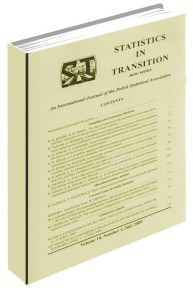A MULTIDIMENSIONAL AND DYNAMISED CLASSIFICATION OF POLISH PROVINCES BASED ON SELECTED FEATURES OF HIGHER EDUCATION IN 2002–2013
A MULTIDIMENSIONAL AND DYNAMISED CLASSIFICATION OF POLISH PROVINCES BASED ON SELECTED FEATURES OF HIGHER EDUCATION IN 2002–2013
Author(s): Wojciech ŁukaszonekSubject(s): Economy, National Economy, Public Finances, Socio-Economic Research
Published by: Główny Urząd Statystyczny
Keywords: higher education; doubly multivariate data; cluster analysis; dendrite method; covariance matrix; Kronecker product
Summary/Abstract: For close to two decades after the fall of communism in 1989, Polish higher education enjoyed an unprecedented period of development. Favourable political, economic, social and demographic changes led to a fivefold increase in the number of students and the number of higher educational institutions. The dynamic changes and their effects did not occur uniformly, in either space or time. An attempt is made here to identify and analyse the regional differentiation between Polish provinces in terms of features relating to higher education. To investigate the changes in higher education in the period of economic and social transformation, observations were made of fundamental characteristics of higher education in the years 2002–2013. The applied procedure uses new statistical methods applicable to a space of doubly multivariate data. The covariance matrix used to construct principal components is given the structure of a Kronecker product. The results led to the identification of six groups of provinces, including two consisting of a single province – Mazowieckie and Małopolskie provinces – which contain the largest and the highest-ranked2 higher educational institutions in Poland: the University of Warsaw and Jagiellonian University.
Journal: Statistics in Transition. New Series
- Issue Year: 18/2017
- Issue No: 2
- Page Range: 84-104
- Page Count: 21
- Language: English

